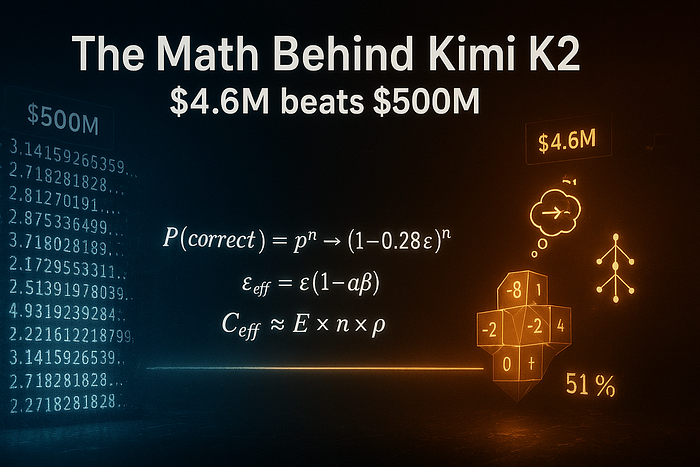Introduction to Kimi K2
The Kimi K2 model, designed by a Chinese startup, has made significant waves in the AI community by outperforming larger models like GPT-5 on crucial AI tests while significantly reducing costs. This achievement has sparked interest in understanding the underlying mathematics and architectural innovations that enable Kimi K2 to work effectively.
Architectural Innovations
The Kimi K2 model incorporates several key architectural innovations, including interleaved thinking, quantization, and expert routing systems. These innovations allow the model to process information more efficiently and effectively, enabling it to achieve better results with fewer resources.
Interleaved Thinking
Interleaved thinking refers to the ability of the model to switch between different tasks or modes of thinking in a flexible and efficient manner. This allows the model to adapt to different situations and learn from a variety of experiences.
Quantization
Quantization is a technique used to reduce the precision of the model’s weights and activations, which can help to reduce the computational resources required to run the model. This can be particularly useful for deploying models on devices with limited resources, such as smartphones or embedded systems.
Expert Routing Systems
Expert routing systems are designed to route input data to the most relevant experts or modules within the model, allowing the model to focus on the most important aspects of the input data. This can help to improve the model’s performance and efficiency by reducing the amount of unnecessary computation.
The Importance of Process over Scaling
The success of the Kimi K2 model highlights the importance of process over mere scaling in AI. While increasing the number of parameters or computational resources can sometimes lead to improved performance, it is not always the most effective or efficient approach. Thoughtful design and careful consideration of the model’s architecture and algorithms can often lead to better results with fewer resources.
Conclusion
The Kimi K2 model is a significant achievement in the field of AI, demonstrating the potential for smaller, more efficient models to outperform larger, more complex ones. By incorporating innovative architectural designs and techniques, such as interleaved thinking, quantization, and expert routing systems, the Kimi K2 model is able to achieve state-of-the-art results while reducing costs and computational resources. As the field of AI continues to evolve, it is likely that we will see more models like Kimi K2, which prioritize process and design over mere scaling.
FAQs
What is the Kimi K2 model?
The Kimi K2 model is a type of AI model designed by a Chinese startup, which has achieved state-of-the-art results on certain AI tests while reducing costs and computational resources.
What are the key architectural innovations of the Kimi K2 model?
The key architectural innovations of the Kimi K2 model include interleaved thinking, quantization, and expert routing systems.
Why is the Kimi K2 model significant?
The Kimi K2 model is significant because it demonstrates the potential for smaller, more efficient models to outperform larger, more complex ones, and highlights the importance of process and design in AI.
Can I learn more about the Kimi K2 model?
Yes, you can learn more about the Kimi K2 model by reading the full blog post on Medium, which provides a detailed breakdown of the model’s architecture and algorithms.










